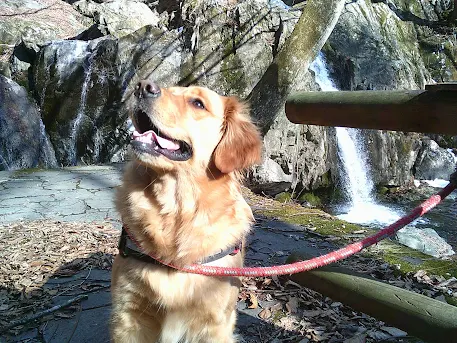平均寿命とは、0歳児が平均してあと何年生きられるかを示す指標であり、健康寿命
とは、健康上の問題で日常生活が制限されることなく生活できる期間を指します。
いくら長く生きられても日常生活が制限される生活を余儀なくされるのは厳しいで
すね。
厚生労働省のデータによれば、2019年の平均寿命は男性81.41歳、女性87.45歳で
あり、健康寿命は男性72.68歳、女性75.38歳でした。これらの数値を比較すると、
平均寿命と健康寿命の差は、男性で8.73年、女性で12.06年となります。
10年前後を制限された生活を送るとなると本当に大変ですね。
2022年の推計では、健康寿命は男性72.57歳、女性75.45歳と、前回の調査から
ほぼ変化がありませんでした。
一方、平均寿命との差は、男性で8.49年、女性で11.63年と、調査開始以来最も
短くなりました。
2022年に平均寿命と健康寿命の差が最も短くなった主な要因として、平均寿命の
減少が挙げられます。
2022年の平均寿命は、男性が81.05歳、女性が87.09歳で、前年よりもそれぞれ
0.42歳、0.49歳短くなりました。
この減少の最大の要因は、新型コロナウイルス感染症による死亡者数の増加とさ
れています。
この差の縮小は、平均寿命の減少が主な要因であり、健康寿命自体の大幅な延伸
によるものではありません。
平均寿命と健康寿命の差である「不健康な期間」は、徐々に縮小傾向にあること
がわかります。
不健康な期間(平均寿命と健康寿命の差)は、主に以下の要因によって生じてい
ます。
1. 生活習慣病(糖尿病、高血圧、心疾患、脳卒中など)
原因: 偏った食生活、運動不足、喫煙、飲酒など
影響: 慢性的な疾患により、生活の質(QOL)が低下し、要介護状態や入院
の期間が長くなる。
2. 認知症
原因: 加齢、遺伝的要因、不適切な生活習慣(運動不足・社会的孤立など)
影響: 認知機能の低下により、日常生活の自立が困難になる。
3. 運動機能の低下(フレイル・サルコペニア)
原因: 加齢、運動不足、栄養不足
影響: 筋力低下による転倒・骨折のリスク増加、要介護状態の進行。
4. 精神的な健康問題(うつ病など)
原因: 高齢による社会的孤立、ストレス、慢性的な病気の影響
影響: 活動意欲の低下、生活の質の低下。
5. 社会的要因(介護環境や医療アクセス)
原因: 適切な介護・医療を受けられない状況、地域差
影響: 予防や早期治療が遅れ、不健康な期間が長引く。
不健康な期間を短縮するための取り組み
1. 生活習慣病の予防(バランスの取れた食事・適度な運動)
2. 認知症対策(脳を刺激する活動、社会参加の促進)
3. フレイル・サルコペニア対策(筋力維持のための運動習慣)
4. 精神的健康の維持(コミュニティ活動や趣味を持つ)
5. 医療・介護体制の充実(早期発見・早期治療の推進)
不健康な期間の短縮には、個人の取り組みだけでなく、社会全体でのサポート
体制の強化も重要になっています。
今後も、健康寿命の延伸と平均寿命との差の縮小を目指す取り組みが重要と
なります。
Average life expectancy is an indicator of how many years a newborn baby can live on average, while healthy life expectancy
is the period during which one can live without daily life being restricted by health problems.
No matter how long one lives, it is tough to be forced to live a life with daily life restrictions.
According to data from the Ministry of Health, Labor and Welfare, the average life expectancy in 2019 was 81.41 years for men and 87.45 years for women, while the healthy life expectancy was 72.68 years for men and 75.38 years for women. Comparing these figures,
the difference between average life expectancy and healthy life expectancy is 8.73 years for men and 12.06 years for women.
It must be really tough to live a life restricted for around 10 years.
In the 2022 estimate, the healthy life expectancy is 72.57 years for men and 75.45 years for women, almost unchanged from the previous survey.
On the other hand, the difference with the average life expectancy was 8.49 years for men and 11.63 years for women, the shortest since the survey began.
The main reason why the difference between average life expectancy and healthy life expectancy was the shortest in 2022 is the decrease in average life expectancy.
The average life expectancy in 2022 was 81.05 years for men and 87.09 years for women, 0.42 years and 0.49 years shorter than the previous year, respectively.
The largest factor behind this decrease is said to be the increase in the number of deaths due to COVID-19.
The reduction in this difference is mainly due to the decrease in average life expectancy, and not due to a significant extension of healthy life expectancy itself.
It can be seen that the "unhealthy period", which is the difference between average life expectancy and healthy life expectancy, is gradually decreasing.
The unhealthy period (the difference between average life expectancy and healthy life expectancy) is mainly caused by the following factors.
1. Lifestyle-related diseases (diabetes, high blood pressure, heart disease, stroke, etc.)
Causes: Unbalanced diet, lack of exercise, smoking, drinking, etc.
Effects: Chronic diseases reduce quality of life (QOL) and lead to longer periods of needing nursing care and hospitalization.
2. Dementia
Causes: Aging, genetic factors, inappropriate lifestyle habits (lack of exercise, social isolation, etc.)
Effects: Decreasing cognitive function makes it difficult to perform daily activities independently.
3. Decreasing motor function (frailty, sarcopenia)
Causes: Aging, lack of exercise, malnutrition
Effects: Increased risk of falls and fractures due to reduced muscle strength, progression of needing nursing care.
4. Mental health problems (depression, etc.)
Causes: Social isolation due to aging, stress, effects of chronic diseases
Effects: Decreased motivation to be active, declining quality of life.
5. Social factors (care environment and access to medical care)
Cause: Inability to receive appropriate care and medical care, regional differences
Impact: Prevention and early treatment are delayed, and the period of ill health is prolonged.
Efforts to shorten the period of ill health
1. Prevention of lifestyle-related diseases (balanced diet and moderate exercise)
2. Dementia prevention (activities that stimulate the brain, promotion of social participation)
3. Frailty and sarcopenia prevention (exercise habits to maintain muscle strength)
4. Maintenance of mental health (community activities and hobbies)
5. Improvement of medical and nursing care systems (promotion of early detection and early treatment)
In order to shorten the period of ill health, it is important not only for individuals to take action, but also to strengthen the support system for society as a whole.
In the future, efforts aimed at extending healthy life expectancy and narrowing the gap with average life expectancy will be important.



